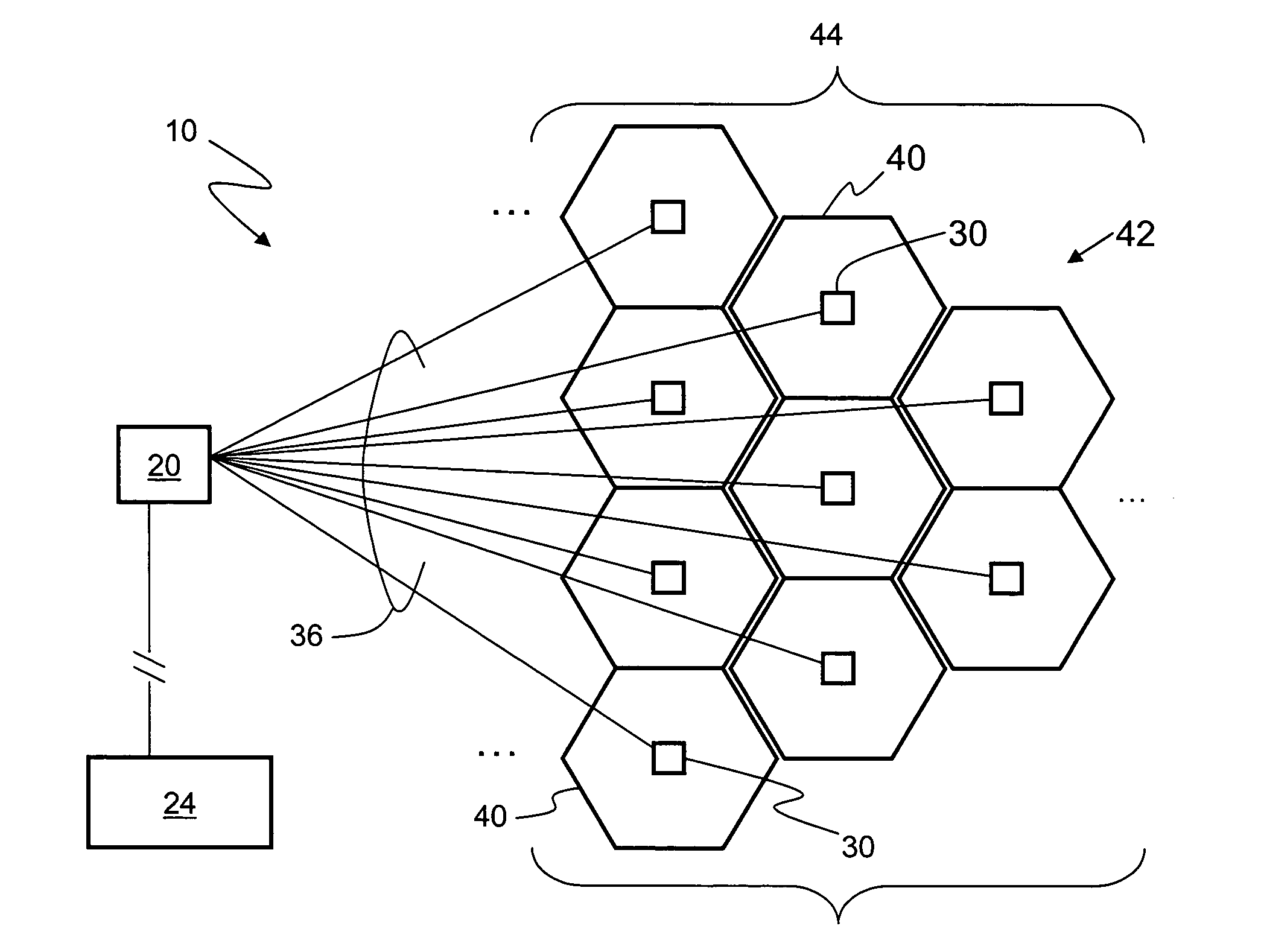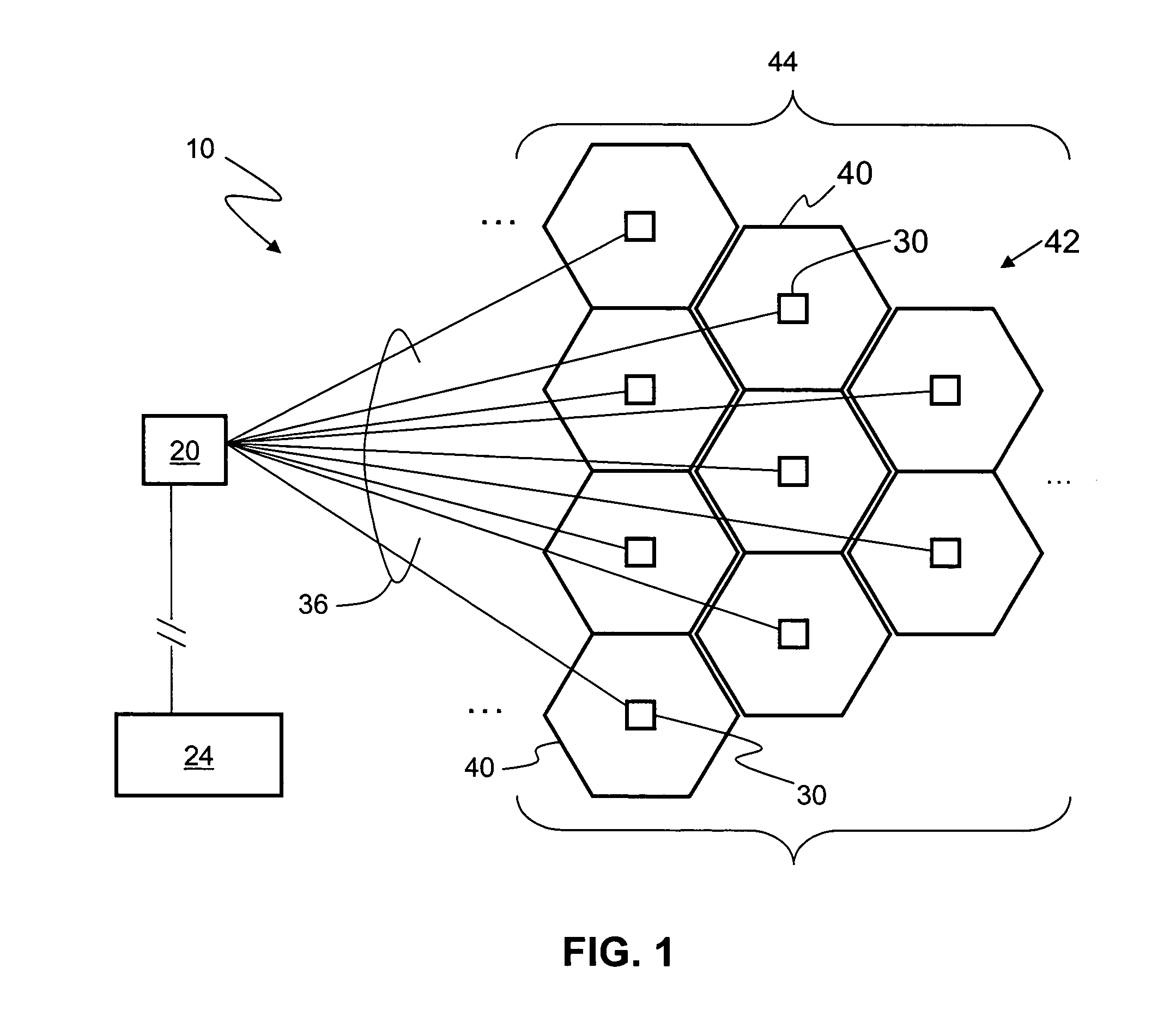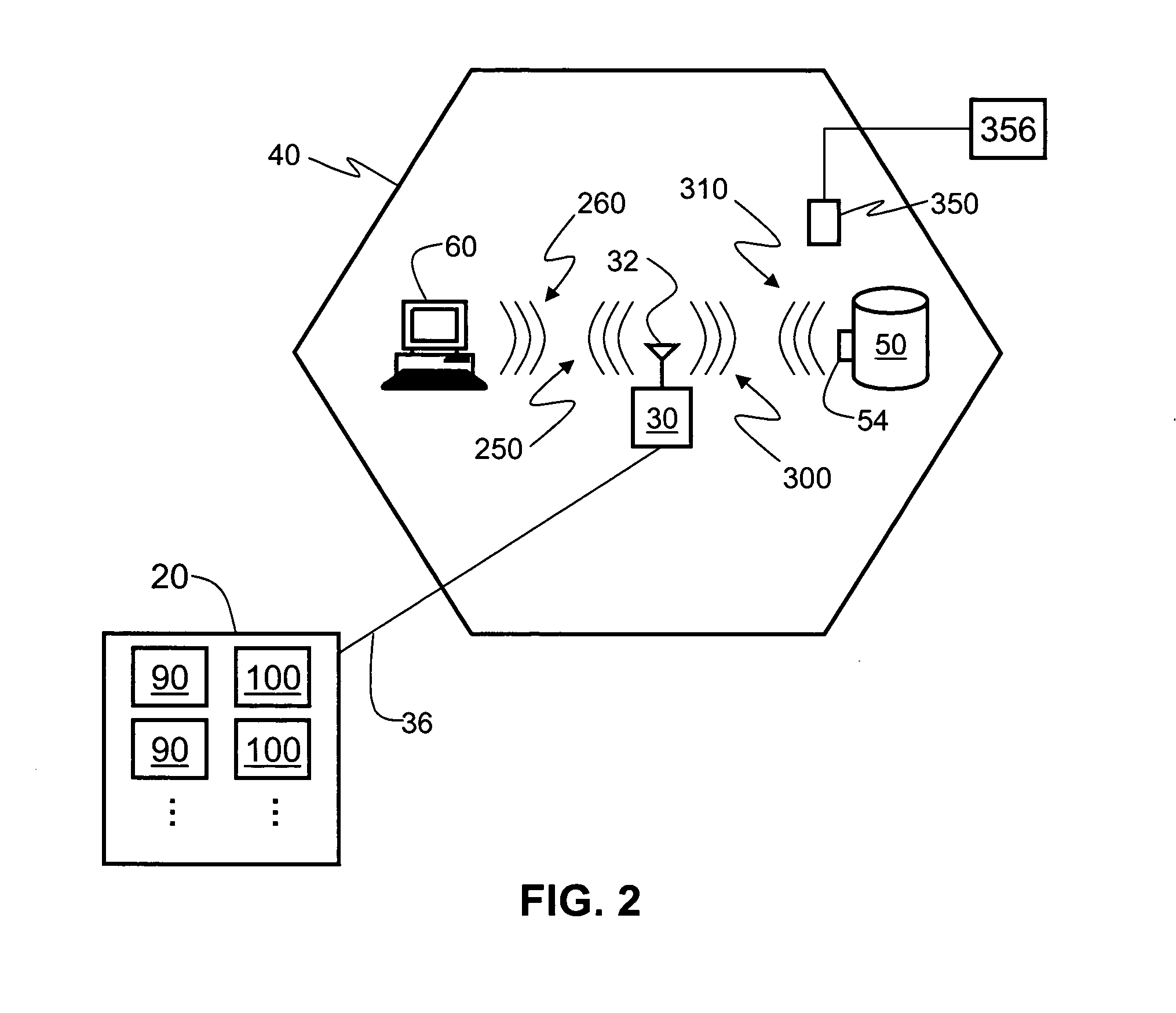Wireless picocellular RFID systems and methods
a picocellular and wireless technology, applied in the direction of near-field systems using receivers, instruments, burglar alarm mechanical actuation, etc., can solve the problems of poor signal strength, expensive implementation and maintenance, and conventional approach to rfid. equipment-intensive and labor-intensive problems
- Summary
- Abstract
- Description
- Claims
- Application Information
AI Technical Summary
Benefits of technology
Problems solved by technology
Method used
Image
Examples
Embodiment Construction
[0022] Reference is now made in detail to the present preferred embodiments of the invention, examples of which are illustrated in the accompanying drawings. Whenever possible, the same or analogous reference numbers are used throughout the drawings to refer to the same or like parts.
[0023]FIG. 1 is a schematic diagram of an example embodiment of a wireless picocellular RFID system 10 according to the present invention. System 10 includes a central control station 20 (also called a “head end”) where all the network management and signal processing is done, and where communication to outside networks such as outside network 24 is established. The central control station 20 is operably coupled to a number of electrical-optical (E-O) access point devices 30 via corresponding RF optical communication links 36 In a preferred embodiment, RF optical communication links 36 include optical fibers, e.g., downlink and uplink optical fibers, as discussed below. The E-O access point devices 30 ...
PUM
 Login to View More
Login to View More Abstract
Description
Claims
Application Information
 Login to View More
Login to View More - R&D
- Intellectual Property
- Life Sciences
- Materials
- Tech Scout
- Unparalleled Data Quality
- Higher Quality Content
- 60% Fewer Hallucinations
Browse by: Latest US Patents, China's latest patents, Technical Efficacy Thesaurus, Application Domain, Technology Topic, Popular Technical Reports.
© 2025 PatSnap. All rights reserved.Legal|Privacy policy|Modern Slavery Act Transparency Statement|Sitemap|About US| Contact US: help@patsnap.com



